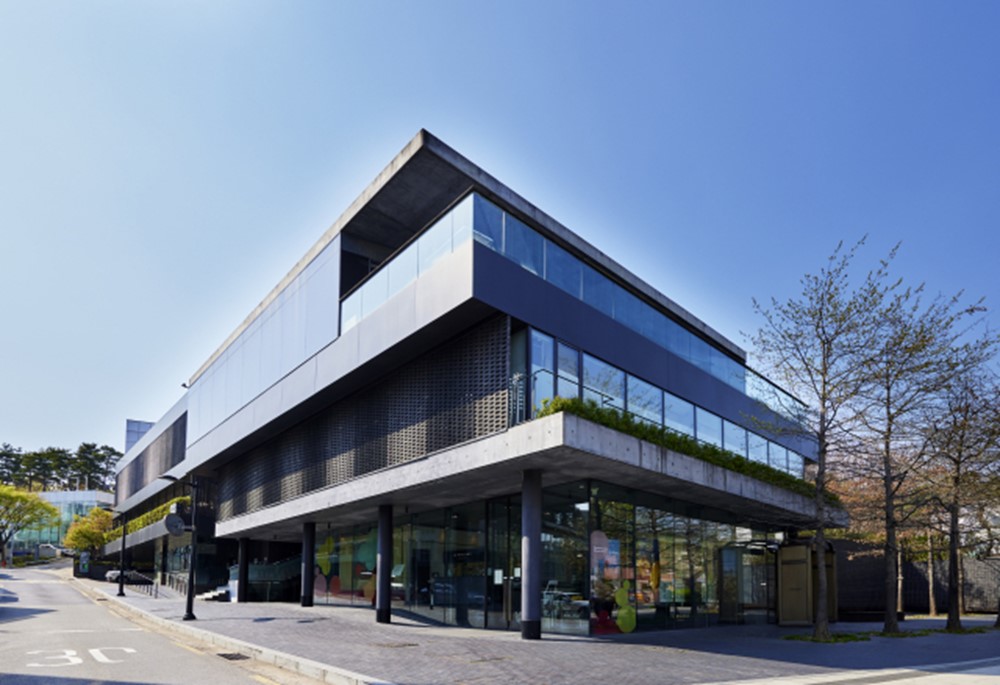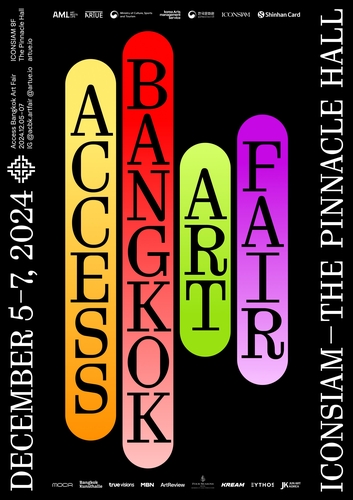Responses and Strategies in Korean Contemporary Art
The news in 2022 that Frieze, a globally prestigious art fair, would be held in Seoul for the first time was both a breath of fresh air and a cause for concern within the Korean art world. On the one hand, it was a positive sign that Korea was being recognized for its potential as a hub in the Asian art market. On the other hand, there were worries that Korea's relatively underdeveloped art market could be overshadowed by Western art fairs backed by massive capital.

The appearance of visitors at Frieze Seoul 2022. ©Yonhap News
The 2022 edition of Frieze Seoul generated unprecedented results, pushing the Korean art market to surpass 1 trillion won. While the 2023 edition received somewhat lukewarm reviews regarding the quality and impact of the exhibited works, Frieze Seoul still played a significant role in heightening interest among Korean art enthusiasts and redefining the standards for viewing art. Frieze is scheduled to take place in Seoul from 2022 to 2026 under a five-year contract with Kiaf, marking this year as a crucial moment to assess the positive impact of this event on the Korean art market.
The Impact of Global Galleries Entering the Korean Market
Alongside the debut of Frieze
Seoul, major galleries from the United States and Europe have opened branches
in Seoul, further embedding Western art's influence in the Korean art market.
As the volatility of the domestic art market increases, attention has
increasingly shifted to well-known foreign artists, posing a risk of weakening
the competitiveness of Korean contemporary art.
Pace Gallery officially
entered the Korean art market in 2017 by opening a branch in Seoul. The gallery
solidified its presence through collaborations with Korean artist Lee Ufan and
has since attracted the interest of Korean art lovers by showcasing works from
a variety of global artists at its Seoul location.
 Pace Gallery Seoul, which reopened in Itaewon, Yongsan-gu, Seoul in
2021. ©Pace Gallery Seoul
Pace Gallery Seoul, which reopened in Itaewon, Yongsan-gu, Seoul in
2021. ©Pace Gallery SeoulPerrotin Gallery also
established a foothold in Korea by opening a branch in Seoul in 2016. The
gallery garnered attention not only for exhibitions featuring internationally
renowned artists but also for showcasing works by Korean artists such as Park
Seo-Bo and Lee Bae. Through its Seoul branch, Perrotin has strengthened
collaborations with Korean artists, contributing to the diversity of the Korean
art market and expanding international exchanges.
Lehmann Maupin Gallery
entered the Korean market by opening a branch in Seoul in 2017. The gallery
represents significant Korean artists like Do Ho Suh and Lee Bul, whose works
have helped to bolster the global presence of Korean art.

The exterior view of Lehmann Maupin, which expanded and relocated to Hannam-dong, Seoul in 2022. ©Lehmann Maupin
Lehmann Maupin also supports exhibitions featuring younger Korean artists, but how this initiative will develop remains to be seen. The entry of major international galleries into Korea has greatly influenced the Korean art market, playing a crucial role in elevating Korea's standing in the global art scene. However, it is unlikely that these galleries will cede their positions for the benefit of the Korean art market. As a result, the Korean art market faces both challenges and opportunities in this environment.
The State of Korean Contemporary Art
Korean contemporary art is marked by a high level of creativity and innovation, backed by rich human and material resources. This distinguishes Korea when compared to China and Japan. While China has a vast market, its domestic art infrastructure is relatively underdeveloped. Japan, on the other hand, has a strong collector base but lacks the infrastructure to produce high-quality art.
 Exterior view of West Bund Art & Design, 2023. ©Courtesy of West
Bund Art & Design.
Exterior view of West Bund Art & Design, 2023. ©Courtesy of West
Bund Art & Design.In contrast, Korea has a thriving network of museums and nonprofit institutions, and even amid a sluggish art economy, commercial galleries continue to emerge across the country. This gives the Korean art scene a relative abundance of resources, both human and material, to compete on the global stage.
 Art Fair Tokyo 2024 ©Art Fair Tokyo
Art Fair Tokyo 2024 ©Art Fair TokyoHowever, the growing divide between museum artists and market artists, along with increasing polarization, presents a significant challenge. This is a more pronounced issue in countries with less developed art markets. While art markets in advanced nations are not perfect, there tends to be a closer alignment between the value of works by museum artists and market artists in these countries.
Strategies and Directions for the Korean Art Market
The Korean art market has
been experiencing extreme stagnation and decline, with no clear alternatives in
sight, and is merely waiting for conditions to improve. Although the Western
art market has also been hit hard by recent economic downturns, it remains
relatively stable in the long term. This stability is a result of centuries of
accumulated know-how in running the art market, with the knowledge and
experience developed over a long period translating into the ability to
navigate crises. The success of art fairs like Frieze and Art Basel is a
manifestation of this experience and knowledge condensed into capital.
Today, the base of the art
market has expanded significantly. While extremely expensive artworks remain
the domain of a select few, global art market statistics indicate that works
priced under $30,000 dominate the market.
Although Korea is recognized
as an advanced economy, it still has a long way to go culturally. While K-pop
and K-food have recently gained global popularity, achieving true advancement
as a nation requires the internationalization of fine arts that embody
spiritual values and depth.
Therefore, the Korean art
world must develop strategies to not only adopt Western art trends critically
but also strengthen the originality of Korean art and establish a unique
position on the international stage. To this end, Korea's major art institutions
should focus on creating environments that allow Korean artists to express
their creativity fully and support policies that enable them to gain
international recognition. Beyond mere financial support, the emphasis should
be on building the infrastructure necessary for international expansion.
Establishing this infrastructure will be crucial in overcoming the limitations
of commodifying and capitalizing on Korean art and enhancing its global
competitiveness.
Conclusion
In this context, for the Korean art market to overcome its current limitations and achieve sustainable growth, it is imperative to view Korean art from the perspective of global standards and to strengthen the originality and creativity of Korean art through self-sustaining efforts. If these opportunities are seized and utilized effectively, Korean art can assert an even stronger presence not only in Asia but also on the global stage.
Jay Jongho Kim graduated from the Department of Art Theory at Hongik University and earned his master's degree in Art Planning from the same university. From 1996 to 2006, he worked as a curator at Gallery Seomi, planning director at CAIS Gallery, head of the curatorial research team at Art Center Nabi, director at Gallery Hyundai, and curator at Gana New York. From 2008 to 2017, he served as the executive director of Doosan Gallery Seoul & New York and Doosan Residency New York, introducing Korean contemporary artists to the local scene in New York. After returning to Korea in 2017, he worked as an art consultant, conducting art education, collection consulting, and various art projects. In 2021, he founded A Project Company and is currently running the platforms K-ARTNOW.COM and K-ARTIST.COM, which aim to promote Korean contemporary art on the global stage.


















